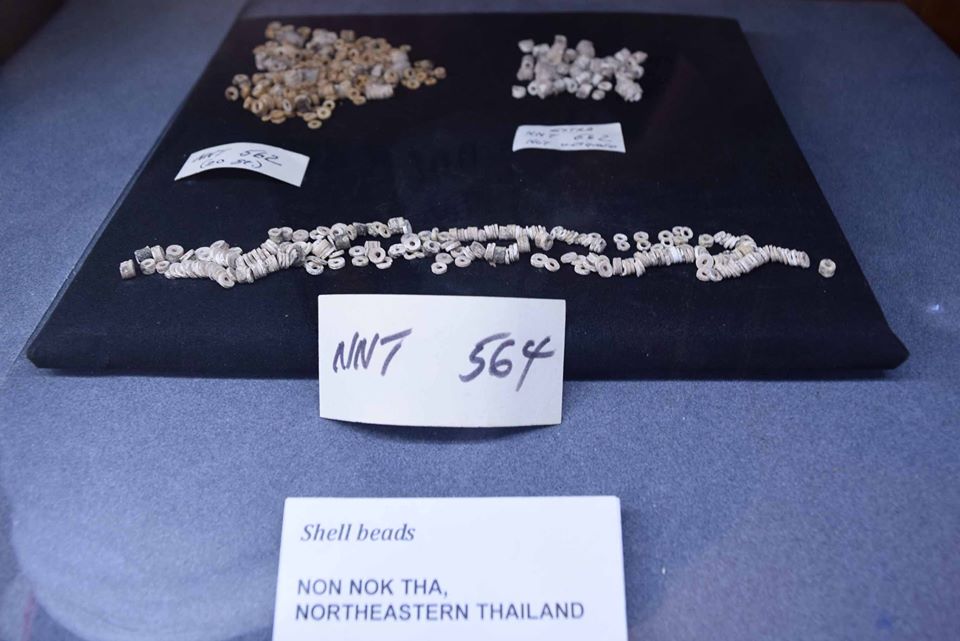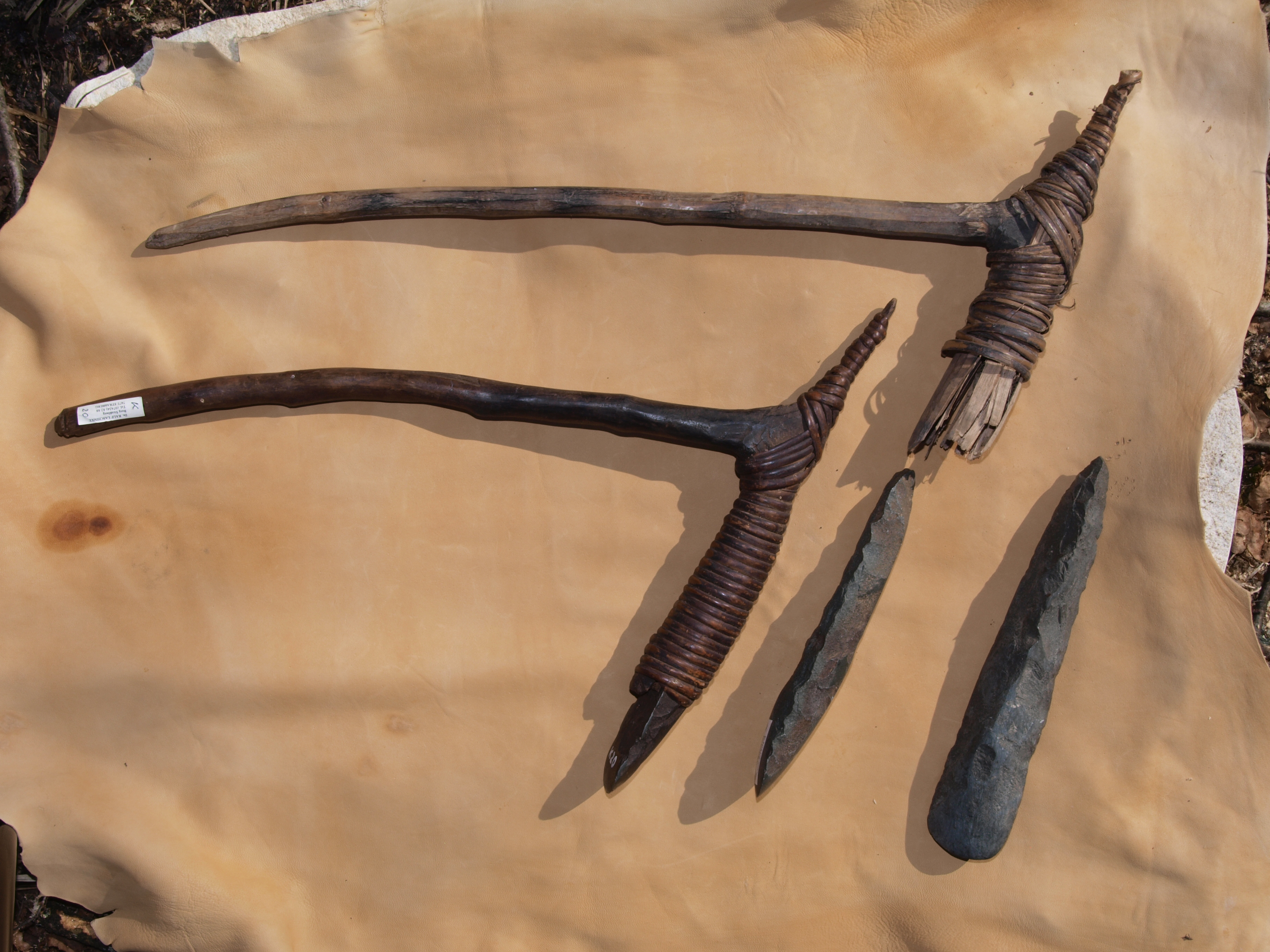|
Nusantao Maritime Trading And Communication Network
In a hypothesis developed by Wilhelm Solheim, the Nusantao Maritime Trading and Communication Network (NMTCN) is a trade and communication network that first appeared in the Asia-Pacific region during its Neolithic age, or beginning roughly around 5000 BC. ''Nusantao'' is an artificial term coined by Solheim, derived from the Austronesian root words ''nusa'' "island" and ''tao'' "man, people". Solheim's theory is an alternative hypothesis to the spread of the Austronesian language family in Southeast Asia. It contrasts the more widely accepted '' Out-of-Taiwan hypothesis'' (OOT) by Peter Bellwood. Solheim emphasizes the cultural aspects of the Southeast Asian people, whereas Bellwood's theory places more emphasis on the linguistic origin of people. Solheim first suggested the concept in 1964. The NMTCN attempts to explain the diffusion of cultural traits throughout the Asia-Pacific region, a pattern that does not seem to match the projections of cultural spread by simple migra ... [...More Info...] [...Related Items...] OR: [Wikipedia] [Google] [Baidu] |
Wilhelm Solheim
Wilhelm G. Solheim II (1924–2014) was an American anthropologist recognized as the most senior practitioner of archaeology in Southeast Asia and as a pioneer in the study of Philippine and Southeast Asian prehistoric archaeology. He is perhaps best known for hypothesizing the existence of the Nusantao Maritime Trading and Communication Network, one of two dominant hypotheses regarding the peopling of the Asia-Pacific region during the Neolithic age. Life and education Wilhelm 'Bill' Gerhard Solheim II was born on the 19th of November 1924 in Champaign, Illinois. He entered the University of Wyoming in 1941, with Mathematics as his major and Physics as his minor. In 1943 he joined the US Air Force to train as a meteorologist. He spent his Air Force years stationed in Casablanca, central coastal Africa, and Germany. In 1947, Bill returned to the US to finish his BA degree in mathematics in 1947. Three months after he finished his undergraduate degree, he pursued a Master of ... [...More Info...] [...Related Items...] OR: [Wikipedia] [Google] [Baidu] |
Neolithic Age
The Neolithic or New Stone Age (from Greek 'new' and 'stone') is an archaeological period, the final division of the Stone Age in Mesopotamia, Asia, Europe and Africa (c. 10,000 BCE to c. 2,000 BCE). It saw the Neolithic Revolution, a wide-ranging set of developments that appear to have arisen independently in several parts of the world. This "Neolithic package" included the introduction of farming, domestication of animals, and change from a hunter-gatherer lifestyle to one of settlement. The term 'Neolithic' was coined by Sir John Lubbock in 1865 as a refinement of the three-age system. The Neolithic began about 12,000 years ago, when farming appeared in the Epipalaeolithic Near East and Mesopotamia, and later in other parts of the world. It lasted in the Near East until the transitional period of the Chalcolithic (Copper Age) from about 6,500 years ago (4500 BCE), marked by the development of metallurgy, leading up to the Bronze Age and Iron Age. In other places, th ... [...More Info...] [...Related Items...] OR: [Wikipedia] [Google] [Baidu] |
Norwegian University Of Science And Technology
The Norwegian University of Science and Technology (NTNU; ) is a public university, public research university in Norway and the largest in terms of enrollment. The university's headquarters is located in Trondheim (city), Trondheim, with regional campuses in Gjøvik (town), Gjøvik and Ålesund (town), Ålesund. NTNU was inaugurated by the King-in-Council in 1996 as a result of the merger of the former University of Trondheim and other university-level institutions, with roots dating back to 1760. Later, some former university colleges were also incorporated. Depending on the ranking publication, the university typically ranks within a range of 101 and 400 globally. As of November 2022, the university boasts an approximate 9,000 employees and 42,000 students. NTNU has the main national responsibility for education and research in engineering and technology. This is likely attributable to the fact that it is the successor of Norway's pre-eminent engineering university, the Norwe ... [...More Info...] [...Related Items...] OR: [Wikipedia] [Google] [Baidu] |
Out-of-Taiwan Hypothesis
The Austronesian people, sometimes referred to as Austronesian-speaking peoples, are a large group of peoples who have settled in Taiwan, maritime Southeast Asia, parts of mainland Southeast Asia, Micronesia, coastal New Guinea, Island Melanesia, Polynesia, and Madagascar that speak Austronesian languages. They also include indigenous ethnic minorities in Vietnam, Cambodia, Myanmar, Thailand, Hainan, the Comoros, and the Torres Strait Islands. The nations and territories predominantly populated by Austronesian-speaking peoples are sometimes known collectively as Austronesia. The group originated from a prehistoric seaborne migration, known as the Austronesian expansion, from Taiwan, circa 3000 to 1500 BCE. Austronesians reached the Batanes Islands in the northernmost Philippines by around 2200 BCE. They used sails some time before 2000 BCE. In conjunction with their use of other maritime technologies (notably catamarans, outrigger boats, lashed-lug boats, and the crab claw s ... [...More Info...] [...Related Items...] OR: [Wikipedia] [Google] [Baidu] |
Peter Bellwood
Peter Stafford Bellwood (born Leicester, England, 1943) is Emeritus Professor of Archaeology in the School of Archaeology and Anthropology at the Australian National University (ANU) in Canberra. He is well known for his Early Farming Dispersal Hypothesis and his Out of Taiwan model regarding the spread of Austronesian languages. Education and career Peter Bellwood received his B.A. and Ph.D. from the University of Cambridge ( King's College) in 1966 and 1980, respectively. His areas of specialization include the human population history of Southeast Asia and the Pacific from archaeological, linguistic and biological perspectives; the worldwide origins of agriculture and resulting cultural, linguistic and biological developments; and the prehistory of human migration. He is researching with Philip J. Piper and Lam My Dzung on an archaeological fieldwork project, funded by the Australian Research Council, on Neolithic sites in Vietnam. [...More Info...] [...Related Items...] OR: [Wikipedia] [Google] [Baidu] |
Human Migration
Human migration is the movement of people from one place to another, with intentions of settling, permanently or temporarily, at a new location (geographic region). The movement often occurs over long distances and from one country to another (external migration), but internal migration (within a single country) is the dominant form of human migration globally.World Migration Report' Migration is often associated with better human capital at both individual and household level, and with better access to migration networks, facilitating a possible second move. It has a high potential to improve human development, and some studies confirm that migration is the most direct route out of poverty. Age is also important for both work and non-work migration. People may migrate as individuals, in family units or in Mass migration, large groups. There are four major forms of migration: invasion, conquest, colonization and emigration/immigration. People moving from their home due to force ... [...More Info...] [...Related Items...] OR: [Wikipedia] [Google] [Baidu] |
Cultural Diffusion
In cultural anthropology and cultural geography, cultural diffusion, as conceptualized by Leo Frobenius in his 1897/98 publication ''Der westafrikanische Kulturkreis'', is the spread of cultural items—such as ideas, styles, religions, technologies, languages—between individuals, whether within a single culture or from one culture to another. It is distinct from the diffusion of innovations within a specific culture. Examples of diffusion include the spread of the war chariot and iron smelting in ancient times, and the use of automobiles and Western business suits in the 20th century. Types Five major types of cultural diffusion have been defined: * Expansion diffusion: an innovation or idea that develops in a source area and remains strong there, while also spreading outward to other areas. This can include hierarchical, stimulus, and contagious diffusion. * Relocation diffusion: an idea or innovation that migrates into new areas, leaving behind its origin or source of the ... [...More Info...] [...Related Items...] OR: [Wikipedia] [Google] [Baidu] |
Trading Network
Trade involves the transfer of goods and services from one person or entity to another, often in exchange for money. Economists refer to a system or network that allows trade as a market. Traders generally negotiate through a medium of credit or exchange, such as money. Though some economists characterize barter (i.e. trading things without the use of money) as an early form of trade, money was invented before written history began. Consequently, any story of how money first developed is mostly based on conjecture and logical inference. Letters of credit, paper money, and non-physical money have greatly simplified and promoted trade as buying can be separated from selling, or earning. Trade between two traders is called bilateral trade, while trade involving more than two traders is called multilateral trade. In one modern view, trade exists due to specialization and the division of labor, a predominant form of economic activity in which individuals and groups concentra ... [...More Info...] [...Related Items...] OR: [Wikipedia] [Google] [Baidu] |
Adze
An adze () or adz is an ancient and versatile cutting tool similar to an axe but with the cutting edge perpendicular to the handle rather than parallel. Adzes have been used since the Stone Age. They are used for smoothing or carving wood in hand woodworking, and as a Hoe (tool), hoe for agriculture and horticulture. Two basic forms of an adze are the hand adze (short hoe)—a short-handled tool swung with one hand—and the foot adze (hoe)—a long-handled tool capable of powerful swings using both hands, the cutting edge usually striking at foot or shin level. A similar tool is called a mattock, which differs by having two blades, one perpendicular to the handle and one parallel. History Africa The adze is depicted in ancient Egyptian art from the Old Kingdom onward. Originally the adze blades were made of stone, but already in the Predynastic Egypt, Predynastic Period copper adzes had all but replaced those made of flint. Stone blades were fastened to the handle by tying ... [...More Info...] [...Related Items...] OR: [Wikipedia] [Google] [Baidu] |
Austronesian Maritime Trade Network
A trade route is a logistical network identified as a series of pathways and stoppages used for the commercial transport of cargo. The term can also be used to refer to trade over land or water. Allowing goods to reach distant markets, a single trade route contains long-distance arteries, which may further be connected to smaller networks of commercial and noncommercial transportation routes. Among notable trade routes was the Amber Road, which served as a dependable network for long-distance trade. Maritime trade along the Spice Route became prominent during the Middle Ages, when nations resorted to military means for control of this influential route. During the Middle Ages, organizations such as the Hanseatic League, aimed at protecting interests of the merchants and trade became increasingly prominent. In modern times, commercial activity shifted from the major trade routes of the Old World to newer routes between modern nation-states. This activity was sometimes carri ... [...More Info...] [...Related Items...] OR: [Wikipedia] [Google] [Baidu] |
Lingling-o
''Lingling-o'' or ''ling-ling-o'' are a type of penannular or double-headed pendant or amulet that have been associated with various Late Neolithic to late Iron Age Austronesian cultures. Most ''lingling-o'' were made in jade workshops in the Philippines, and to a lesser extent in the Sa Huỳnh culture of Vietnam, although the raw jade was mostly sourced from Taiwan. The earliest surviving examples of lingling-o, dating back to around 500 BC, were made out of nephrite jade, but many later examples were also made of shell, gold, copper, and wood; the different materials suggest differences in the wearer's social standing. The term lingling-o was first popularized by H. Otley Beyer, who adapted it from the Southern Ifugao name for such ornaments; it has since also come to be used as a blanket term for various metal age Austronesian ornaments found in the Philippines, Taiwan, and Vietnam. Although the earliest known lingling-o dates from 500 BC, the art of jade carving and ... [...More Info...] [...Related Items...] OR: [Wikipedia] [Google] [Baidu] |






